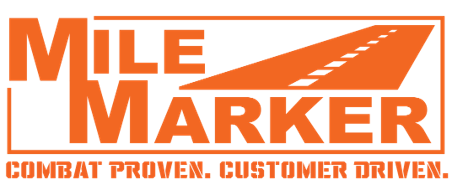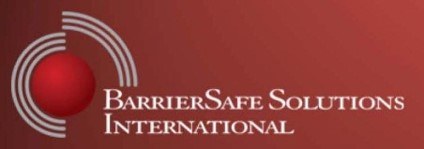The Interim CEO’s Ladder of Inference
February 14, 2024
Traveling is a catalyst that forces the recognition of symbols and patterns, just as it mixes metaphors in the mind.
I find myself savoring the rather retro experience of walking across the runway, which feels firm underfoot, and my eyes dance from the conveyors moving luggage to the shiny painted lines that guide the pilots into their parking spaces.
That always makes me chuckle — thinking this skilled crew just flew a tube 550 mph for 3000 miles, seven miles in the sky, and the orderliness of the industry demands their utmost attentiveness when it comes to parking the jet.
It’s like a NASCAR or Formula 1 driver being scored by a driver’s ed instructor on parallel parking.

It’s a nice change to be able to board the plane outside on the “tarmac” — get some air — even though it smells of ‘JP.
I thought about the old school rolling staircase I just climbed and why it seems generally cooler than the passenger jetway which always just seemed to me to be nothing more than sleeved-together conex boxes or shipping containers.
(I think my affinity for the rolling stairs lies in my childhood — my dad was obsessed with airplanes and would take me on Sundays to see them take off and land — and I recall vividly walking onto the runway and boarding the blue and teal-striped Eastern Airlines 727 for the trip to Florida to hang out with my relatives in Hallandale, Hollywood and North Miami Beach.)
You see, when you commence an interim CEO, CRO — meaning “Chief Restructuring Officer” or COO role, or other interim management assignment, there are inevitably many unknowns, and the only constant and one thing you can count on — very incomplete information.
“Generally a company that needs transformational leadership is a tale of neglect that may have been the only constant over 20 or 30 or 40 years – and that neglect typically permeates all corners of the company.” – Paul Fioravanti, MBA, MPA, CTP
It’s as much like flying a plane blindfolded as it is climbing a ladder or staircase blindfolded. You don’t know what the real story is inside the corporation, perhaps in some cases, only what the ownership group, senior secured bank or lender purports it to be, based on the best available (read: sketchy) information they’ve been able to glean from a haphazard approach or in many cases, a laissez-faire approach to keeping a watchful or discerning eye on their borrower.
In these roles I often wonder about the management team I’m about to encounter, or, for a duration, inherit.
I wonder about trust. I think about who will make “the traveling team.”
I fantasize about how well organized the factory and manufacturing production are. They are not all Toyota-LEAN grade models of efficiency.
It’s usually far worse than one would hope — because as Jim Malone taught me, “culture is determined by the worst behavior the organization tolerates.”
For bad behavior, usually the service companies are the worst, with vehicles, warehouses, tool cribs often disheveled and disorganized. I always think, God, would any airline tolerate any of this behavior? Could it afford to?
There is a clear correlation between company culture and company distress — generally the companies with the well maintained, orderly facilities with crisp systems to manage everything from accounting to workforce management to inventory and production — don’t let themselves get on a slippery slope.

The Two-Sided Ladder of Inference and Transforming Organizations
When you do turnaround work, interim CEO work, and/or any kind of transformational organizational change, you inevitably find yourself in the midst of a two-sided Ladder of Inference problem. (The Ladder of Inference was first put forward by organizational psychologist Chris Argyris and used by Peter Senge in The Fifth Discipline: The Art and Practice of the Learning Organization.)
The Ladder of Inference describes the thinking process that we go through, usually without realizing it, to get from a fact to a decision or action. Like avionics, it needs to be, or at least should be, a fairly specific science.
You don’t run an airline or a space program by winging it, pardon the pun.
Likewise, you can’t wing it as an interim leader.
On the one hand, you can easily jump to conclusions and have preconceived notions, as the change agent; on the other side, the veterans of the industry you’re working in, or the company you’re working on fixing, can quickly dismiss your lack of industry knowledge as a major risk or failure factor, or it just may be a response to their own fears.
In my experience, specific industry experience in the interim CEO role is grossly overvalued.
It’s better to have lots of experiences across lots of challenging situations in what I call the “its” -grow it, fix it, exit.
Do I want my airline pilot to have lots of years of experience? Yes, of course. Do I want him or her having any crashes on their record? Uh, no.
Management is not exactly the same as flying a plane.
Many organizations suffering through poor financial and operating performance are in the midst of a misalignment between their own reality, and the actual reality of what’s happening. They’ve often lost touch with clients and customers, and other stakeholders.
They have management myopia (or governance myopia, if the board is the problem.)
And, the most important thing a transformational manager can do, is collect objective data. And the second most important thing is, once that data has been collected, don’t jump to conclusions.
OK, back to the ladder…but, why two sides?
Well, as the change agent, a turnaround or transformation manager, or interim CEO, or chief restructuring officer, inevitably view the steps and the sequence of the rungs in the ladder one way, and the other folks see it differently.
But that’s ok.
From either side, success can only come from being rooted in reality. Reality and facts (and factual evidence) are at the base of the ladder. From this point of “safety,” where we’re closest to the ground, we begin to ascend. As we go up, we must look at facts, isolate our beliefs and prior experience, and draw conclusions based on hard data, and be prepared to take objective actions. That’s hard for people to do.
Some are afraid of heights, so to speak.
And, no doubt, people are creatures of habit, inertia and momentum, and change is difficult.
It’s human nature to page ahead in the test, to skip scenes while watching Netflix, to wanting to know what happens at the end of a book.
A challenge in the company or organization in question is that, across departments, locations, functions, and even geography, “sets” of employees undoubtedly have preconceived ideas, blind spots, and “blocks” preventing them, and by proxy, the organization, from moving forward.
That is further complicated by what a prior management team may have told them, and whether they identified, or disagreed with, those perspectives.
And, there may be legacy cultures in departments and locations that pre-date even the current ownership group. One company I worked on had 9 owners in 34 years. They’d been there, done that, and had nine T-shirts and coffee mugs telling them that this time it was different.
Do employees know what the plan was? What the new plan is? Did they agree with it? It doesn’t matter because now they are in the midst of another change — external consultants, perhaps a new CEO and perhaps other new executives, site heads, functional heads, etc.
All of the stakeholders of a given organization — the bank, lenders, vendors, employees, shareholders, customers, former legacy owners in some cases — have wildly varied beliefs, experiences, judgment, and degrees of openness of mind. And, never forget, that the incentives drive the behavior.
Sometimes the enormous stack of challenges to the business organization, which can be overwhelming, and seem more like a wooden ladder heading down into Dante’s Inferno. Often great motivation comes in the trials by fire — often one or more stakeholders feel the heat and the lick of the flames.

The point of The Ladder of Inference is to force objectivity and get consensus to move a team of people forward in unison, to respond to and manage challenges.
Some won’t understand what is happening. Some won’t care. Some just leave. Some check out.
But most dig in, buckle up, let go, and hang on.
And when they first witnessed positive impacts, they realized they didn’t have to be fearful.
And, they climb to a higher elevation, step by step.
Just like climbing a ladder.
And, God willing, the fear of heights eventually subsides and the impact of their collective change transforms the organization.
And the organization, through the work of the interim CEO, leverages data and places the proper focus on execution and actions that make lasting improvements to, at the very least, financial and operating results.



































































































































































































